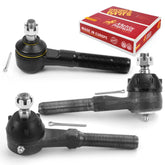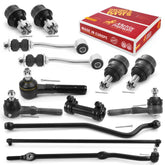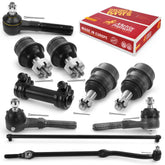Brake Rotors 101: An Introduction to How They Work and Types
Rotors Brake
Brake rotors are considered as one of the most essential parts of any vehicle. They work in conjunction with the brake pads to slow down and stop the vehicle. By nature, brake rotors and pads experience wear over time and call for a replacement. In this blog, we will explore what brake rotors are, how they work, and the different types of brake rotors available for replacement.
What are Brake Rotors?
Brake rotors, also known as brake discs, are circular metal discs that are attached to the wheels of a vehicle. There are four brake rotors in cars, installed one for each wheel. When the brake pedal is pressed, the brake pads are pressed against the rotor, causing friction that slows down or stops the vehicle. In a nutshell, the brake rotors are the surfaces the brake pads are pressed against. Brake rotors are made from various materials, including cast iron, steel, and ceramic.
How Do Brake Rotors Work?
Brake rotors work by creating friction between the brake pads and the rotor. When the brake pedal is pressed, the brake calipers squeeze the brake pads against the rotor, creating friction that slows down or stops the vehicle. The intense heat generated by the friction is absorbed by the rotor and dissipated into the air.
Types of Brake Rotors
There are several types of brake rotors available on the market, each with their own unique characteristics and benefits. The brake rotor types are typically differentiated by the types of ribs used in their design. Here are some of the most common types of brake rotors:

Standard Blank Rotors
Standard rotors are the most common type of brake rotors. They are made from cast iron or steel and are typically used in everyday sedan vehicles. Standard rotors are durable and provide reliable braking performance in most driving conditions and are more affordable.

Slotted Rotors
Slotted rotors have slots cut into the rotor's surface. The slots help to remove gas and debris from the rotor's surface, improving braking performance and reducing the risk of brake fade. Slotted rotors are mostly used on heavy duty trucks or SUVs who require more power to stop.

Cross-Drilled Rotors
Cross-drilled rotors have holes drilled through the rotor's surface. The holes help to dissipate heat and reduce the risk of brake fade by allowing hot gases to escape from between the rotor and the brake pad. Cross-drilled rotors are also useful for removing water and debris from the rotor's surface, improving braking performance in wet conditions.

Slotted and Cross-Drilled Rotors
Slotted and cross-drilled rotors combine the benefits of both types of rotors, providing excellent cooling performance and improved braking performance in all driving conditions. They are commonly used in high-performance vehicles like sports cars or in situations where heavy braking is required.
There are several factors that can affect a brake rotor's lifespan, including:
-
Driving Habits: Frequent heavy braking and aggressive driving can cause the rotors to wear out faster.
-
Quality of Brake Pads: Low-quality brake pads can create more heat and friction, causing the rotors to wear out faster.
-
Environmental Conditions: Driving in wet or humid conditions can cause rust to form on the rotor's surface, reducing its lifespan.
-
Material Quality: The quality of the material used to make the rotor can affect its lifespan. High-quality materials like ceramic and carbon can last longer than cast iron or low-grade steel.
-
Vehicle Weight: Heavier vehicles put more strain on the braking system, causing the rotors to wear out faster.
By being mindful of these factors and performing regular maintenance on the braking system, you can help extend the lifespan of your brake rotors and ensure optimal braking performance for your car. Remember, the brake system is one of the most important safety systems of your vehicle. Be aware of when you need a replacement!
When to Replace Brake Rotor
Brake rotors are designed to last a long time, but they will eventually wear out and need to be replaced. Signs that your brake rotors may need to be replaced include:
- Pulsating or vibrating brakes
- Squeaking or squealing brakes
- Reduced braking performance
- Visible damage or wear on the rotor's surface
Choosing the right type of brake rotor depends on factors such as driving style, vehicle weight, and brake system. It's important to replace brake rotors when they show signs of wear or damage to maintain proper braking performance and ensure the safety of yourself and others on the road.
Metrix Premium Chassis Parts Brake Rotors will be available on our website in 2023! Keep an eye out for them, and get your premium brake rotors before everyone else.









